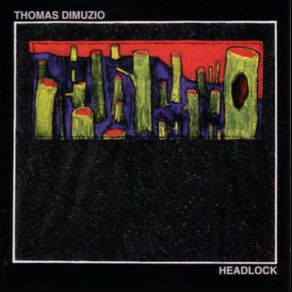Headlock
Download links and information about Headlock by Thomas Dimuzio. This album was released in 1989 and it belongs to Electronica, Rock, Pop, Alternative genres. It contains 10 tracks with total duration of 49:51 minutes.

|
|
|---|---|
| Artist: | Thomas Dimuzio |
| Release date: | 1989 |
| Genre: | Electronica, Rock, Pop, Alternative |
| Tracks: | 10 |
| Duration: | 49:51 |
| Buy it NOW at: | |
| Buy on iTunes $9.90 | |
Tracks
[Edit]| No. | Title | Length |
|---|---|---|
| 1. | Inherent Power and the Space Between | 2:39 |
| 2. | Shank Thesis - Cut and Try | 8:22 |
| 3. | Settelement - Part One | 2:24 |
| 4. | Moneytable At the Countinghouse | 4:51 |
| 5. | Sallow | 6:50 |
| 6. | Certainty Persuaded Me | 4:39 |
| 7. | Detach | 6:15 |
| 8. | Settlement - Part Two | 1:26 |
| 9. | Fear of Corners | 3:38 |
| 10. | (Wake Up from That Dream Young One) For You Don't Know What They Want You to Think | 8:47 |
Details
[Edit]Originally released in 1989 on David Prescott's very small U.S. independent Generations Unlimited label, this CD is much more than the standard backward look at the early, formative work of a mature artist. Indeed, this is already a mature work, even though it came early in Dimuzio's professional career. The ten pieces in the program more or less run into (and out of) each other, but entirely different effects can be achieved by activating the random play button on your CD player, and altering the dynamic interactions of selections. The opening track, "Inherent Power and the Space Between," begins with the slow acceleration of what sounds like a race car engine (actually a treated bicycle), and then morphs into Hell's own Grand Prix, before evolving into the vaguely noise-rock "Shank Thesis," where unearthly howls and squeals are supported by almost funky percussive patterns. This piece ends with mysteriously interrupted static bursts, first quiet enough to be almost subliminal, growing into a full symphony of noise, and then trailing off into a urban tapestry of sirens, automobile and train horns, voices and radio broadcasts. This long track finally gives way to various other pieces with other combinations of real and processed sound — Dimuzio's bag of tricks seems almost inexhaustible, and there's little or no recycling of sounds or techniques along the way. Those listeners who are put on edge by the intensity of the opening material will be pleasantly surprised by the later appearance of the elegant and mournful "Sallow," which sounds like a chorus of large aquatic mammals involved in a ritualized grieving ceremony for a lost comrade. Many other treats await the receptive listener, as Dimuzio alternatively highlights nervous, fragmented jumpcuts of sampled sounds, and then sinister industrial drones in the style of Lustmord or Lull, and even evokes some splendidly Enoesque ambience on "Detach," which sounds like the processed tolling of large church bells. It's all here, folks — just about every sonic treatment and effect known to man, or so it seems.